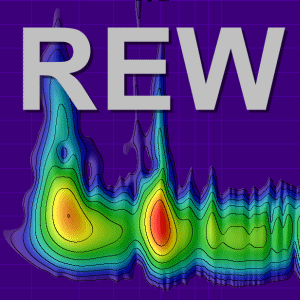-
AUDIO VIDEO PROCESSING, SETUP & ENVIRONMENTOfficial REW (Room EQ Wizard) Support Forum Audiolense User Forum Calibration Equipment Auto-EQ Platforms / Immersive Audio Codecs Video Display Technologies / Calibration AV System Setup and Support Listening Room / Home Theater Build Projects Room Acoustics and Treatments AV Showcase Movies / Music / TV / Streaming
-
AUDIO VIDEO DISCUSSION / EQUIPMENTHome Theater / Audio and Video - Misc Topics Essence For Hi Res Audio AV Equipment Advice and Pricing Awesome Deals and Budget AV Equipment AV Receivers / Processors / Amps UHD / Blu-ray / CD Players / Streaming Devices Two Channel Hi-Fi Equipment DIY Audio Projects Computer Systems - HTPC / Gaming HD and UHD Flat Screen Displays Projectors and Projection Screens AV Accessories Buy - Sell - Trade
Navigation
Install the app
How to install the app on iOS
Follow along with the video below to see how to install our site as a web app on your home screen.
Note: This feature may not be available in some browsers.
More options
You are using an out of date browser. It may not display this or other websites correctly.
You should upgrade or use an alternative browser.
You should upgrade or use an alternative browser.
THD Calculation
- Thread starter Talevy
- Start date
John Mulcahy
REW Author
- Joined
- Apr 3, 2017
- Posts
- 8,396
You can find formulae and definitions on wikipedia. The distortion graph controls have an option to set how many harmonics are included in the THD calculation for sweep measurements.
Thank you for the answer,
I gave an example of a calculation using 2 harmonics only to understand the formula and still can't figure it out.
I Would appreciate help-
Does the algorithm consider the energy at the harmonic frequency only or also at frequencies around it?
How is the division into time windows done in THD measurement for sweep sine?
Thanks
I gave an example of a calculation using 2 harmonics only to understand the formula and still can't figure it out.
I Would appreciate help-
Does the algorithm consider the energy at the harmonic frequency only or also at frequencies around it?
How is the division into time windows done in THD measurement for sweep sine?
Thanks
John Mulcahy
REW Author
- Joined
- Apr 3, 2017
- Posts
- 8,396
I am unable to understand what your example figures are supposed to mean. Is H1 mean to be the fundamental? Why would the 2nd harmonic be 35 dB higher than the fundamental? The figures look nonsensical.
Not sure what you are asking, but there is an explanation of how the distortion images are extracted from the deconvolved impulse response in Transfer function measurement with sweeps.How is the division into time windows done in THD measurement for sweep sine?
Thank you John.
1. I am sorry for the confusion, here is another example:
H = [84.8190 43.6400 34.9430 34.1940 38.1570 31.1410]; (Fundamental, H2, H3.. H6 in SPL)
Can you please share the formula you used to calculate the THD (REW result: 0.513% for the calculation with 6 harmonics)?
The known formulas:
sqrt(sum(H(2:end).^2))/H(1) -> result: 0.9665
or
sqrt(sum(H(2:end).^2))/sqrt(sum(H(1:end).^2)) --> result: 0.6950
2. In the distortion figure, do you show the IR of each harmonic? Or is an additional operation performed on the IR of each harmonic? And if so, what exactly?
Thanks for your help.
1. I am sorry for the confusion, here is another example:
H = [84.8190 43.6400 34.9430 34.1940 38.1570 31.1410]; (Fundamental, H2, H3.. H6 in SPL)
Can you please share the formula you used to calculate the THD (REW result: 0.513% for the calculation with 6 harmonics)?
The known formulas:
sqrt(sum(H(2:end).^2))/H(1) -> result: 0.9665
or
sqrt(sum(H(2:end).^2))/sqrt(sum(H(1:end).^2)) --> result: 0.6950
2. In the distortion figure, do you show the IR of each harmonic? Or is an additional operation performed on the IR of each harmonic? And if so, what exactly?
Thanks for your help.
John Mulcahy
REW Author
- Joined
- Apr 3, 2017
- Posts
- 8,396
If you want me to comment on an REW result attach the mdat file.
Distortion calculations are carried out on linear magnitudes, not dB SPL.
The distortion graph shows distortion vs frequency, the distortion images are FFT'd and plotted scaled in frequency according to their order so that they align with the corresponding fundamental frequency.
Distortion calculations are carried out on linear magnitudes, not dB SPL.
The distortion graph shows distortion vs frequency, the distortion images are FFT'd and plotted scaled in frequency according to their order so that they align with the corresponding fundamental frequency.
John Mulcahy
REW Author
- Joined
- Apr 3, 2017
- Posts
- 8,396
At what frequency are you questioning the calculation?
John Mulcahy
REW Author
- Joined
- Apr 3, 2017
- Posts
- 8,396
Your 0.513% figure comes from the option "Use harmonic frequency as ref". If you deselect that you will get a figure of 1.10%, which is the answer you should also get if you perform the calculation manually using the 27.281 Hz data. The effect of Use harmonic frequency as ref is explained in the help:
A google search should turn up a copy of the paper referenced.
The harmonic and THD plots in normalised mode use the level at the fundamental for each frequency as their reference by default - for example, the distortion figures for each harmonic at 1 kHz will depend on the level of the fundamental at 1 kHz. If Use harmonic frequency as ref is selected the reference will be the frequency of the harmonic - for example, at 1 kHz the 2nd harmonic figure will depend on the level of the fundamental at 2 kHz, the 3rd harmonic will depend on the level of the fundamental at 3 kHz and so on. This follows a recommendation made by Steve F. Temme in "How to graph distortion measurements" presented at the 94th AES convention in March 1993. If the response of the system being measured is flat this makes no difference to the results, but when the response is not flat (as for most acoustic measurements) it can remove the influence of the loudspeaker's fundamental response from the distortion figures. As an example, suppose the loudspeaker response was flat apart from a 6 dB peak at 2 kHz. 2 kHz is the 2nd harmonic of 1 kHz, so the 2nd harmonic level shown at 1 kHz will be increased by 6 dB due to the boost in the fundamental when using the excitation frequency as the reference. Similarly the 3rd harmonic level at 667 Hz (2/3 kHz) will be boosted by 6 dB. If the harmonic frequency were used as the reference the distortion figures would not show this boost. Using the harmonic frequency as the reference also provides a more meaningful view of distortion at frequencies below the LF roll-off of the system as otherwise the distortion levels are boosted as the level of the fundamental drops. Note that this option will not affect the traces when the plot is not normalised, but will still affect the values in the legend if the distortion figures are set to read in percent or in dB relative to the fundamental.
A google search should turn up a copy of the paper referenced.
John Mulcahy
REW Author
- Joined
- Apr 3, 2017
- Posts
- 8,396
Windowing is based on the distortion image separation.
Popular tags
20th century fox
4k blu-ray
4k uhd
4k ultrahd
action
adventure
animated
animation
bass
blu-ray
calibration
comedy
comics
denon
dirac
dirac live
disney
dolby atmos
drama
fantasy
hdmi 2.1
home theater
horror
kaleidescape
klipsch
lionsgate
marantz
movies
onkyo
paramount
pioneer
rew
romance
sci-fi
scream factory
shout factory
sony
stormaudio
subwoofer
svs
terror
thriller
uhd
ultrahd
ultrahd 4k
universal
value electronics
warner
warner brothers
well go usa












